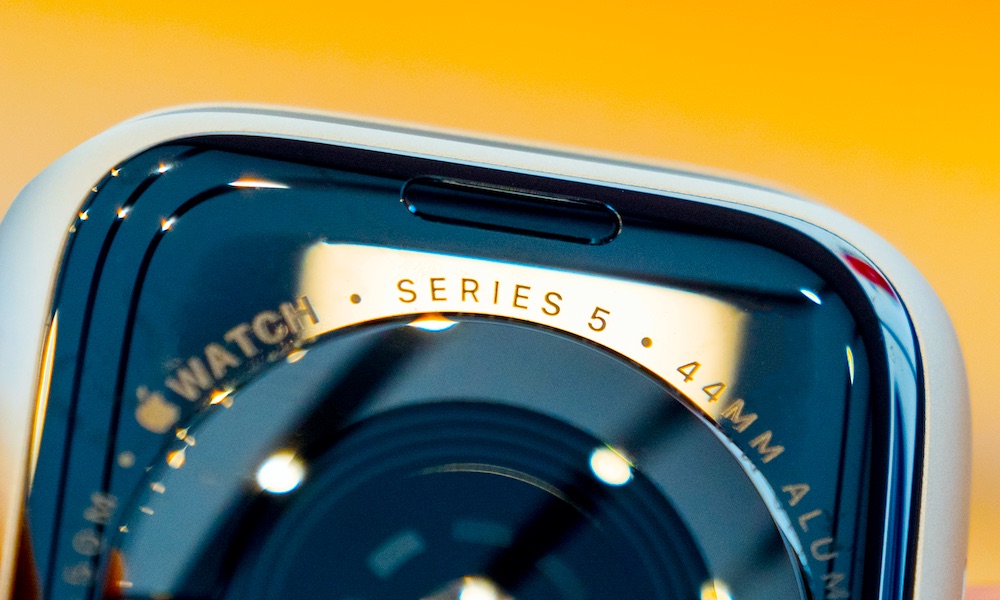The Apple Watch Has Great Heart Monitoring Features, But It’s Not Foolproof
 Credit: Hadrian / Shutterstock
Credit: Hadrian / ShutterstockToggle Dark Mode
The Apple Watch is great at saving lives, thanks to features like the built-in ECG, heart rate monitoring, fall detection, and emergency SOS. In fact, with all that great technology working on your wrist, you might think that you’ve got all of your health bases covered, but it’s important to keep in mind that as amazing as the Apple Watch is, it’s not without its limitations, as a new study shows.
One of the key selling points for the new Apple Watch Series 4 when it came out a couple of years ago was its ability to detect atrial fibrillation (AFib), a serious heart condition that very often goes undetected for years due to its intermittent nature—even if a person has serious AFib, the odds of presenting symptoms at the exact moment you’re at your doctor’s office are probably somewhere in the same neighbourhood as winning the lottery.
So the ability of a device that you wear on your wrist almost all the time to detect this condition can be invaluable, but while we’ve already seen studies confirming that the Apple Watch can detect AFib with a high degree of accuracy, it turns out that there are still some cases where it can’t detect the condition at all—and it’s something that Apple already knows about.
High Heart Rates and AFib
According to a new report by Fortune, while study after study has shown that the Apple Watch is anywhere from 84 percent to 97 percent accurate in detecting AFib, most of these studies have actually failed to examine the ability of the Apple Watch to accurately detect AFib at a heart rate greater than 120 beats per minute.
This is likely because Apple has already admitted in its application to the Food and Drug Administration that the Apple Watch is not accurate at detecting irregular heart rhythms above 120 beats per minute or below 50 beats per minute.
Unclassified rhythms include any rhythms with rates > 120 or < 50 beats/min (bpm), regular rhythms with rates > 100 bpm or more than 4 ectopic beats.
Further, in a support article about heart health notifications, Apple makes it pretty clear that the Apple Watch is not a panacea for all types of heart conditions, and recommends the users consult a doctor if they’re feeling unwell, even if they believe their Apple Watch is telling them that everything is okay.
Apple Watch is not constantly looking for AFib. This means Apple Watch cannot detect all instances of AFib, and people with AFib may not get a notification.
According to the Mayo Clinic, AFib typically occurs at heart rates of 100 to 175 beats per minute. While that may lead you to believe that the 120bpm limit would mean a majority of cases of AFib wouldn’t be detected, it’s important to keep in mind that this isn’t a linear scale, and studies have found that the mean heart rate of those diagnosed with AFib was 109 bpm.
Despite this, however, a third of AFib patients in the study did have a heart rate in excess of 120, and some of those were already on AFib medication that results in lower heart rates, meaning that there could be a larger number of people not receiving treatment for AFib who would present symptoms at higher heart rates.
A smaller study published in Circulation looked at the ability of the Apple Watch to detect AFib in a group of patients following cardiac surgery, finding that it was only accurate in 41% of cases. The study, however, only looked at a relatively small sample group of 90 patients who were known to have symptoms of AFib.
By contrast, a 2018 study that determined an accuracy rate of 97% pulled more than 139 million heart rate and step count measurements over the course of a year from a total of 9,750 participants. A later study by Stanford Medicine included over 400,000 participants across the U.S., although this one was focused more on determining how likely the notifications were to indicate AFib, rather than being false positives. In other words, it studied whether users who received a notification actually had AFib, not whether users who had AFib received a notification.
What This Means for You
The main takeaway from this is that you shouldn’t rely exclusively on your Apple Watch to let you know of potential health problems, since as great as the heart monitoring features are, they’re not foolproof.
While this may seem obvious when you think about it—and even Apple points this out—the number of life-saving stories that we often hear from Apple Watch users can create “a false security of security,” Fortune notes, especially for users who may not have read or fully understand the limitations that Apple has published.
Still, every study confirms that when the Apple Watch does detect an irregular heart rhythm, it’s more likely to be accurate than not, and it’s a fair statement that even a 40% rate of detection is better than the 0% rate that somebody would get from not wearing an Apple Watch. So if your Apple Watch tells you something is wrong, you should definitely seek medical treatment, but if you’re feeling unwell you shouldn’t assume you’re okay just because your Apple Watch isn’t telling you there’s a problem.






